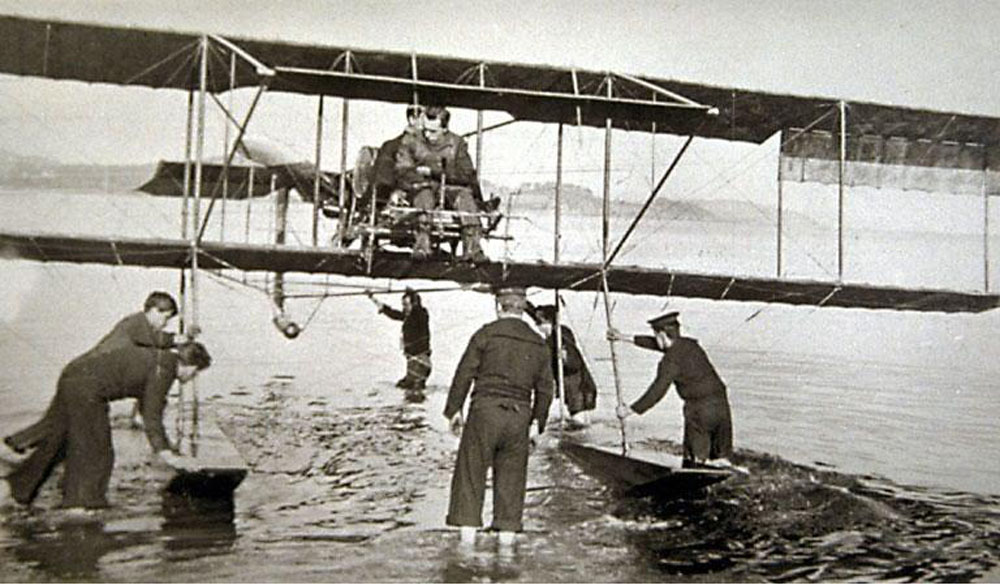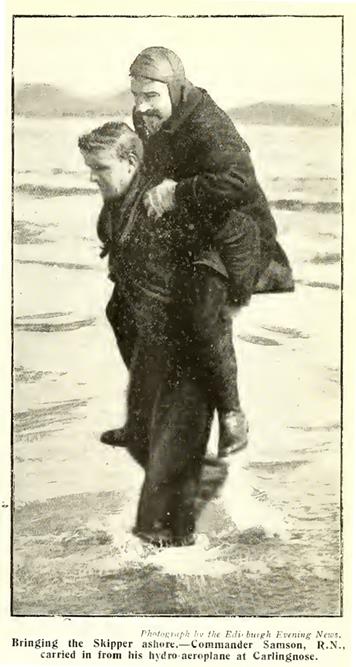Naval Aviation 4 – East Coast Air Stations
| < The Birth of British Naval Aviation | Δ Index | 1st July 2014 – Formation of the Royal Naval Air Service > |
In 1912, the Royal Flying Corps was established, with a Military and a Naval Wing.
The Government announced the creation of a series of Air Stations, associated with the new east Coast Naval bases.
The first naval air station in Scotland was at Port Laing, just along from the old Submarine Mining Station.


First Flights from Port Laing
Scotsman – Thursday 3rd October 1912
Yesterday forenoon the new hydroplane station established at Port Laing, near North Queensferry, was opened by two flights being carried out by Commander Samson and Captain Gordon. Three machines have been placed in the hangars, and would have operated previously, but the very stormy weather experienced at the beginning of the week precluded all possibility of any attempt at flying being made, more especially as the wind has been persistently from the east and north-east.
With the improvement which has set in in the weather during the night, it became known that flying would be engaged in yesterday morning and at a comparatively early hour people were seen concentrating on Port Laing form the surrounding district. When the hangar of No. 10 hydroplane was thrown open Commander Samson, having made a preliminary examination directed its removal to the sandy beach whence it was launched by a strong force of bluejackets. The carrying wheels however, lodged in the soft sand at high water mark, and the services of some fifty navvies on strike from Rosyth Naval Base were called to the aid of the launching party, and the machine was soon dragged again to solid ground.

Their mission was to spot submarines underwater, by observing the wake and eddies left by their passage.

The Sphere – April 1913, page 65
Some interesting experiments have been made in the course of the flying week at Rosyth to test the visibility of a submarine when viewed from above. The experiments were of a similar nature to those made by “The Sphere” in the English Channel last year. The recent Forth experiments showed that the water of the Forth is sometimes too muddy to enable the hydroplanes to see the submarine even when viewed directly from above. Yet the hydroplane could always “spot” its submerged enemy: the swirl of bubbles and foam which rode in the wake of the submarine was an infallible index to its position. The experiments confirmed the expected use of the hydroplane in this direction. The machine shown here is the 70 hp Short biplane converted into a hydro aeroplane by the addition of floats.
 Looking after the pilot!
Looking after the pilot!
The Full Story
Here is the full story of Carlingnose Naval Air Station 1912 to 1914
| < The Birth of British Naval Aviation | Δ Index | 1st July 2014 – Formation of the Royal Naval Air Service > |